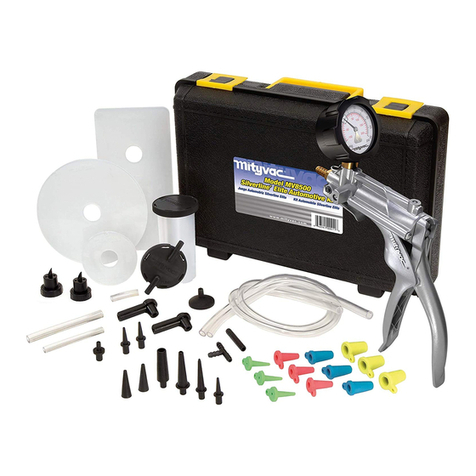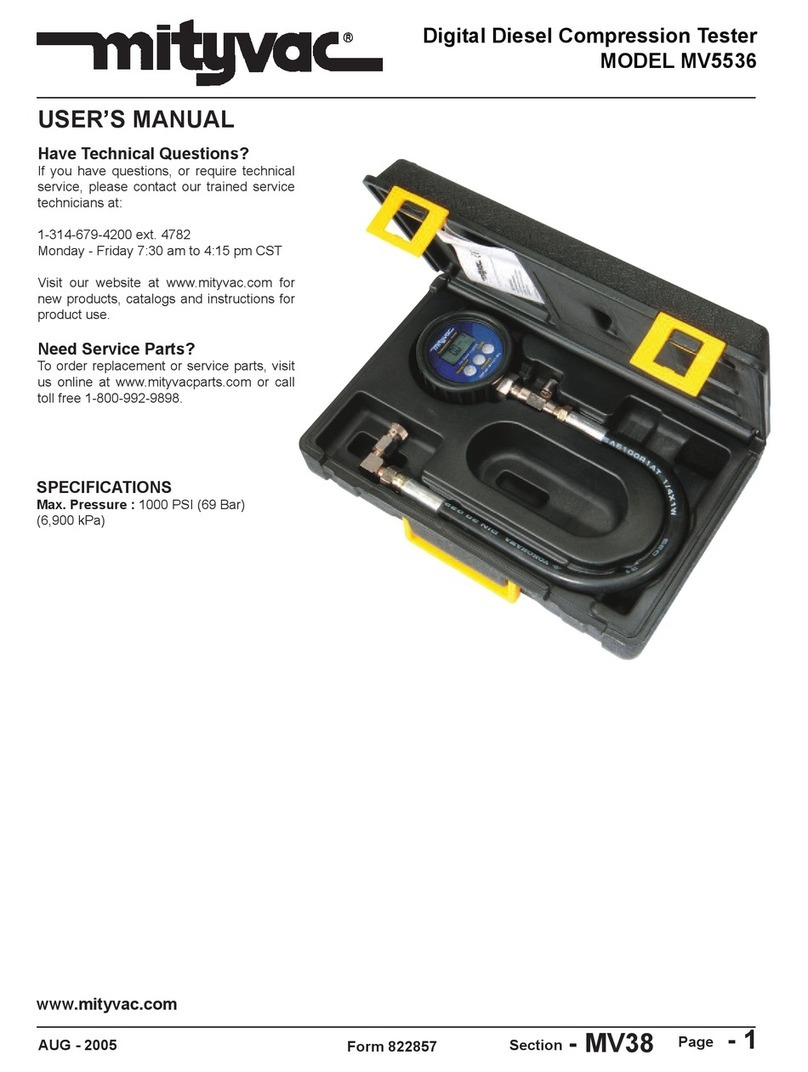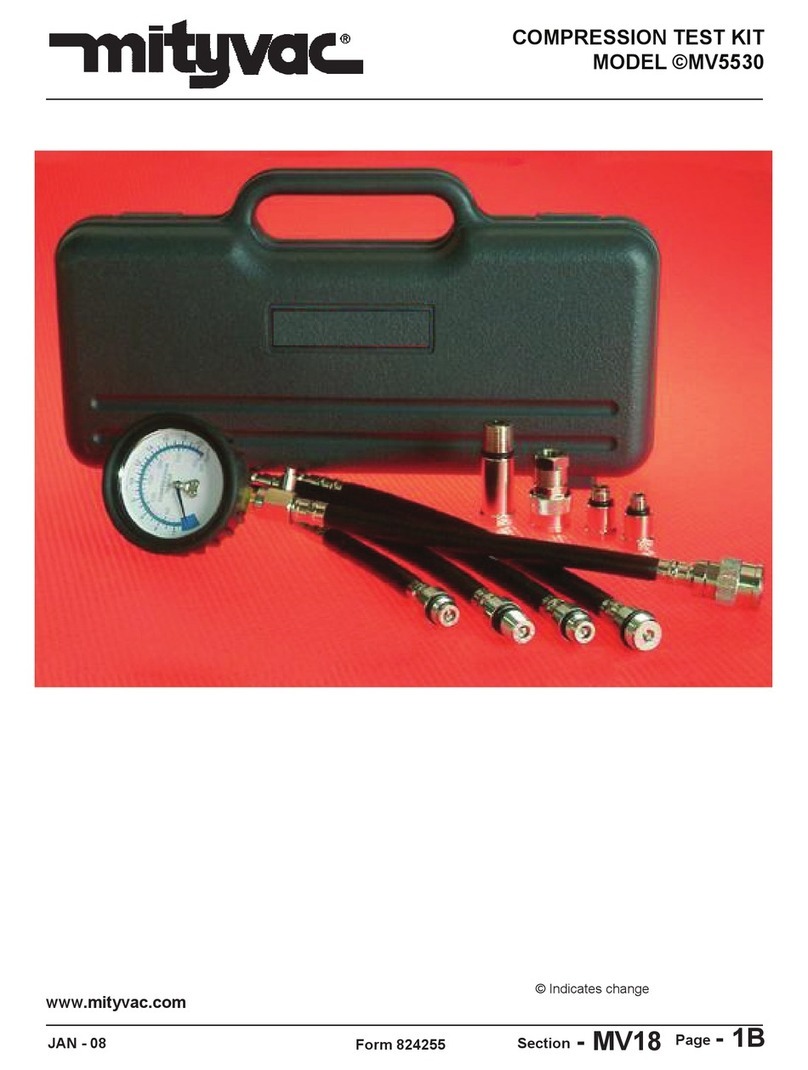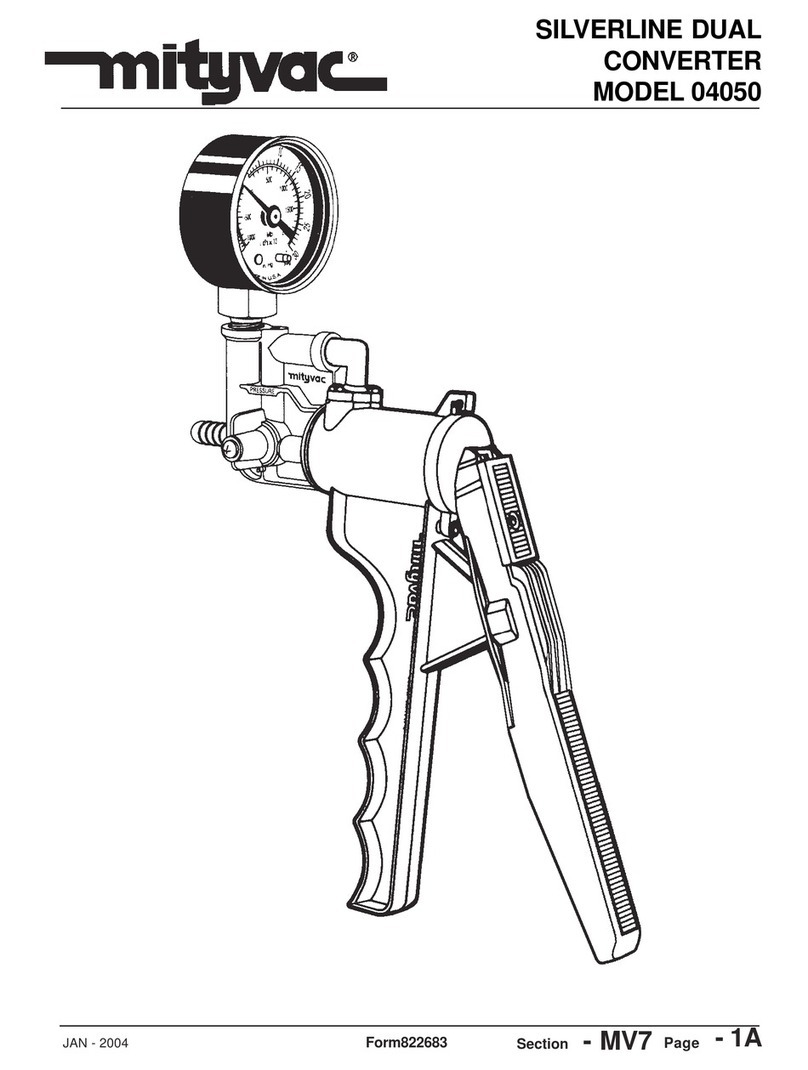
Safety Precautions
Form 824262 Page Number - 3
WARNING!
MV5545E must be operated by qualified service technicians.
If personal injury or material damage occurs as a result of inappro-
priate operation, e.g. if safety instructions are ignored, or resulting
from incorrect use, no claims or legal actions may be taken against
Lincoln.
The use of this service tool requires the exposure of highly
flammable gasoline. To prevent fires, explosions and/or severe
injury, always apply extra precautions when diagnosing or
working on fuel systems.
The FST Pro is designed for servicing a variety of vehicles in a
safe, convenient manner. However, fuel delivery systems vary
widely between makes and models of vehicles, potentially requir-
ing additional steps or equipment to perform a proper service job.
The procedures outlined in this manual are to serve as guidelines
for the use of this equipment. In addition to these guidelines,
always follow the manufacturer’s recommended
procedures when servicing each unique vehicle. Use common
sense in the application of this tester and do not attempt to force
a test on a fuel system for which this equipment is not designed to
perform.
This tester is designed for use on gasoline/petrol or diesel engines
only. It is safe for use with gasoline and most gasoline additives,
including alternative/flex fuels that contain high levels of ethanol.
• Always read carefully and understand instructions prior to us-
ing this equipment
• Wear safety glasses at all times
• Operate the vehicle only in a well ventilated area, and away
from potential sources of flame or ignition.
• Prior to starting an engine, make sure all components of the
tester, body parts, and personal clothing are clear of rotating
engine components
• Avoid burns by remaining cautious of engine parts that may
become hot when the engine is running
• Never leave a vehicle unattended while testing
• Check and secure all fuel system connections before
starting the vehicle or activating the fuel pump
• Wear gloves and protective clothing to avoid the contact of
fuel on skin. If contact occurs, immediately wash the area and
perform necessary first aid
• Always keep a fire extinguisher on hand when performing fuel
related diagnostics. Make sure the extinguisher is rated for fuel,
electrical and chemical fires
• Avoid spilling fuel on hot engine parts. Clean-up any fuel spills
immediately after they occur
CAUTION
Specifications
Maximum Flow Capacity:
3.8 liters/min. (1 gal./minute) gasoline/petrol (.73 specific gravity)
225 liters/hour (60 gal./hour) gasoline/petrol (.73 specific gravity)
3.5 liters/min. (0.9 gal./minute) diesel (.85 specific gravity)
205 liters/hour (55 gal./hour) diesel (.85 specific gravity)
Maximum Rated Pressure: 8 bar (120 PSI) (800 kPa)









































